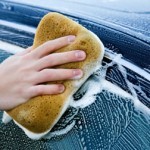When people talk about “green building”, they’re typically referring to energy-efficient heating and cooling appliances, insulated walls and windows, and sustainable materials. But these days “green plumbing” is getting increasing attention – and rightly so, because water consumption is a major factor in the environmental footprint of any building! The green plumbing movement is being led by drought-prone Australia, where it’s even possible for plumbers to earn a Green Plumbing Certification.
“Green plumbing” helps the environment by doing one or more of the following:
- Saving water
- Saving energy
- Using environmentally-friendly materials
In the US, LEED Certification is becoming increasingly popular, which means that green plumbing systems are being installed in many new or substantially renovated buildings. But green plumbing improvements don’t have to be big and expensive. In fact, they start at under $20.
Over the course of the next few blog posts, we’ll look at a range of green plumbing upgrades – some that you can do yourself, and others that require professional assistance.
In this first post of our “Green Plumbing” series, we’ll look at the simplest and most affordable green plumbing upgrade you can make: installing low-flow faucet accessories and showerheads.
How do low-flow showerheads and faucet accessories work?
Low-flow showerheads and faucet accessories (often referred to as aerators, which is the most popular type) attach to existing fixtures. Normal-flow showerheads use about six to seven gallons per minute (GPM), and the water comes out at about 80 psi (lbs per square inch, a measure of pressure). Of course, if you try to use less water with a normal showerhead, the stream is flat and insubstantial – a very unsatisfactory shower experience. Low-flow showerheads solve this problem by forcing the water into a narrower opening, which reduces the amount of water that comes out, but maintains the pressure at 80 psi for a nice strong stream. (It’s like partially blocking the end of a hose with your thumb to increase the force of the water coming out – except that low-flow faucets and showerheads reduce the size of the stream only a little, just enough to maintain existing pressure with less water.)
Low-flow faucet accessories work the same way.
There are two different kinds of low-flow faucets and showerheads:
- Aerating faucet accessories and showerheads mix air into the water stream for steady pressure. The steady stream sensation is very popular with consumers. However, mixing air into the water can lead to a reduction in water temperature, which can be a drawback for showers during the winter months.
- Non-aerating faucet accessories and showerheads don’t mix air into the water, which results in a pulse-like rather than a steady-state stream. Not everyone likes the pulse effect, but those who do say it feels like a gentle massage. Non-aerating faucet accessories and showerheads maintain water temperature very well.
How can you tell if you need a low-flow faucet or showerhead?
The EPA standard for new residential lavatory (bathroom) faucets is 1.5 GPM (gallons per minute). Your current faucet may have an aerator on it already, and if it does, it will have the GPM stamped on the side. If the GPM of your existing aerator is greater than 1.5, you should upgrade to a new high-efficiency faucet aerator. If you don’t have an aerator, check to see if the inside of your faucet has threads (grooves) for an aerator to be screwed into it. If it does, install an aerator.
If you already have a low-flow showerhead, check the side of the showerhead to see if it has a flow rate of 2.0 GPM (the new EPA standard for showers). If you don’t already have a low-flow showerhead, you can test your shower to see if its flow rate is too high. Put a two-quart saucepan on the floor of the shower and position it in the middle of the shower stream. Turn the shower on at full pressure and count how many seconds it takes to fill the pan. If it takes fewer than 15 seconds, you would probably benefit from a high-efficiency showerhead.
How much water will a high-efficiency faucet or showerhead save?
It depends on how much water your sink or shower used before you installed the upgrade. The only way to know for sure is to check your utility bills over the next few months and compare them to the same time period during the previous year. If you want to feel good about your decision right away, you can get a rough estimate as follows: assume that your current showerhead uses 2.5 GPM (this is a very common flow rate for modern showerheads). A new 1.5 GPM showerhead will make your shower 40% more efficient. Use your utility bill to calculate 20% of your total water usage (this is the amount typically used for showering), then take 40% of that number. Multiply this by your cost-per-gallon, and you’ll have your savings!
How do I find high-efficiency faucet accessories and showerheads?
When you go to your local plumbing supply store, look for the EPA WaterSense label. This is the equivalent of the EnergyStar label, and all products bearing this label meet the new EPA water use guidelines.
Continue Reading
Tags: Energy Savings, Green Living, Plumbing, Water Conservation
Posted in Energy Savings, Green Living, Plumbing, Water Conservation | Comments Off on Plumbing Is Going Green! Start with Simple Upgrades to Your Faucets and Showerheads

 Following these simple steps from
Following these simple steps from